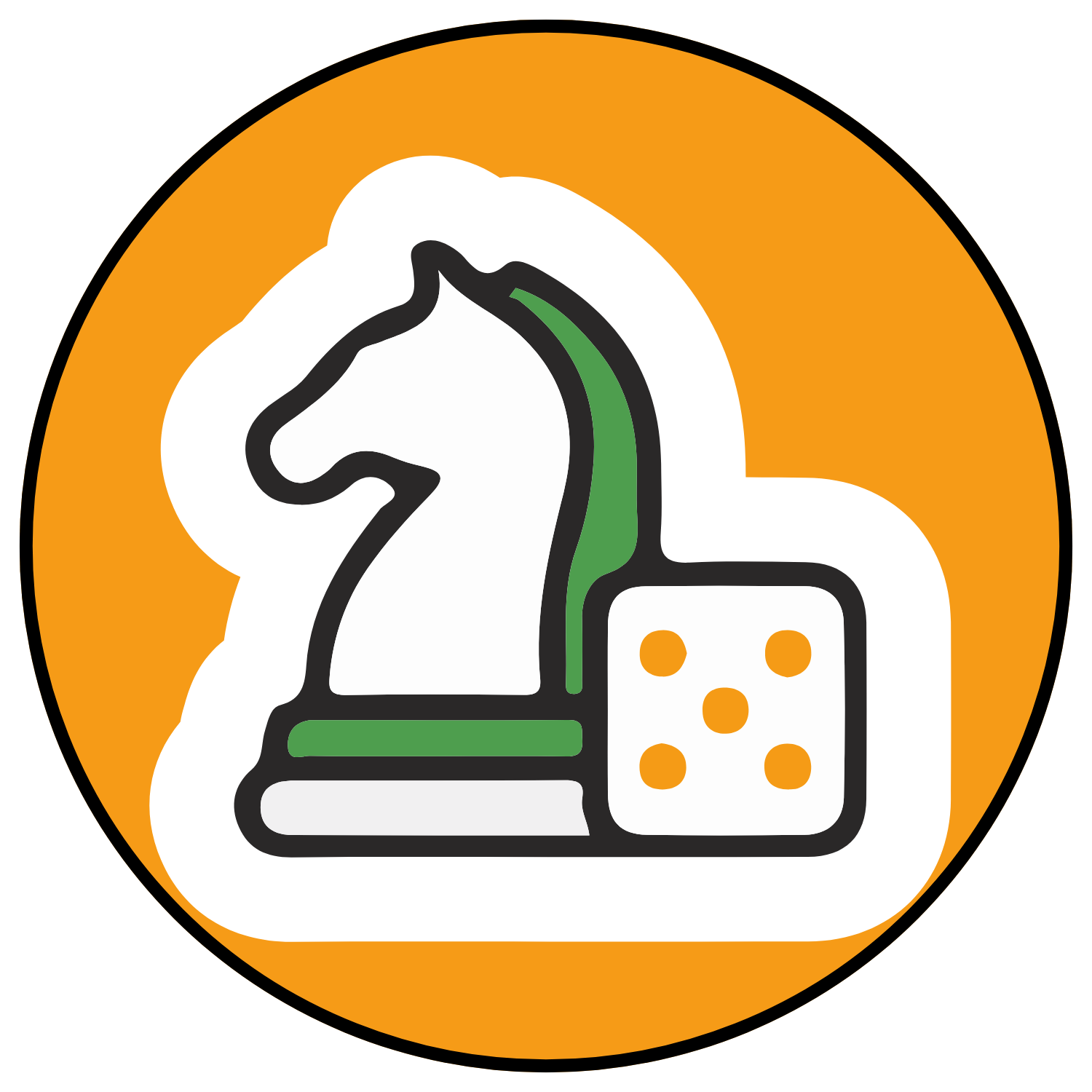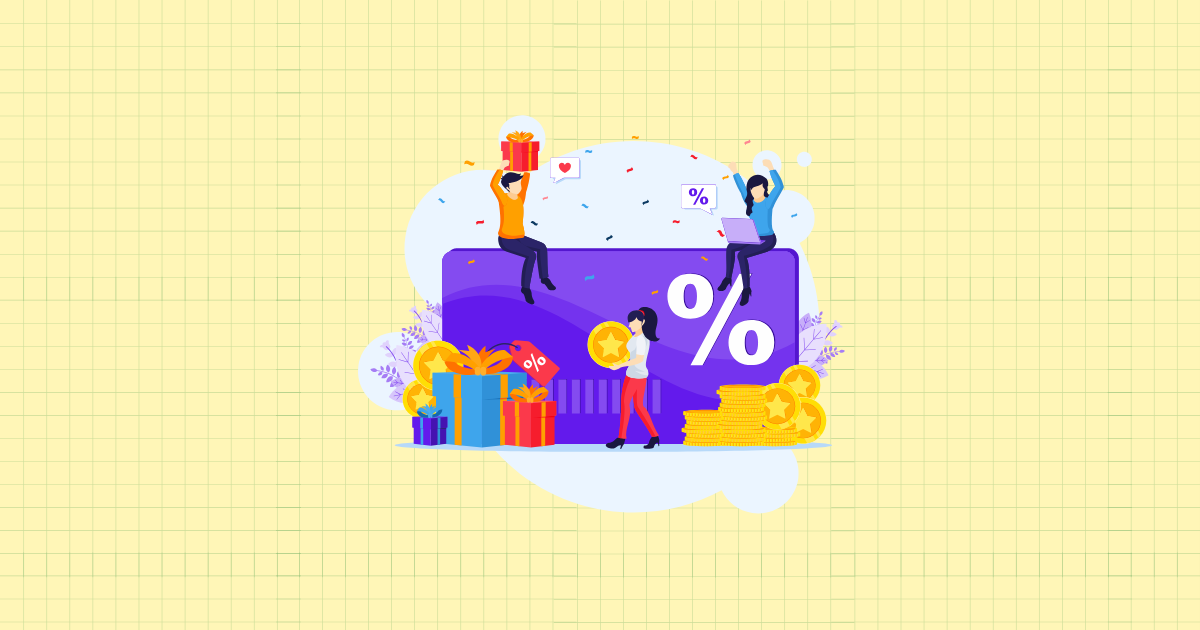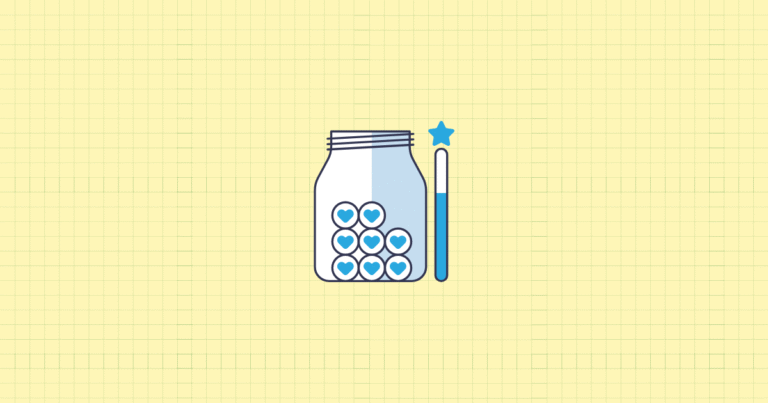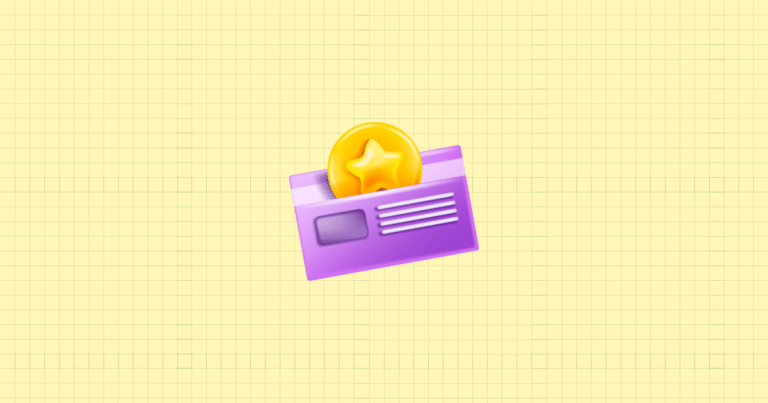The difference between a thriving Shopify store and one that merely survives often comes down to a single metric: customer retention. In today’s hyper-competitive e-commerce landscape, acquiring a new customer costs five times more than retaining an existing one. This stark reality is why loyalty programs have become the secret weapon for successful Shopify entrepreneurs.
Imagine transforming one-time shoppers into passionate brand advocates who return again and again. A well-designed loyalty program doesn’t just encourage repeat purchases—it creates emotional connections that turn customers into an extension of your marketing team. And for Shopify store owners specifically, the platform’s robust ecosystem makes implementing these programs more accessible than ever before.
In this comprehensive guide, we’ll walk you through every step of creating your first Shopify loyalty program. From strategic planning to technical implementation, you’ll discover proven tactics that drive retention, increase average order values, and ultimately boost your bottom line. Whether you’re just launching your store or looking to enhance your existing customer experience, this roadmap will help you build a loyalty program that perfectly aligns with your brand and business goals.
The Business Case for Loyalty Programs
Before diving into the mechanics, let’s talk about what’s really at stake. The numbers tell a compelling story: loyal customers spend 67% more than new ones, and increasing customer retention by just 5% can boost profits by 25-95%. These aren’t just statistics—they’re the foundation of sustainable growth for your Shopify store.
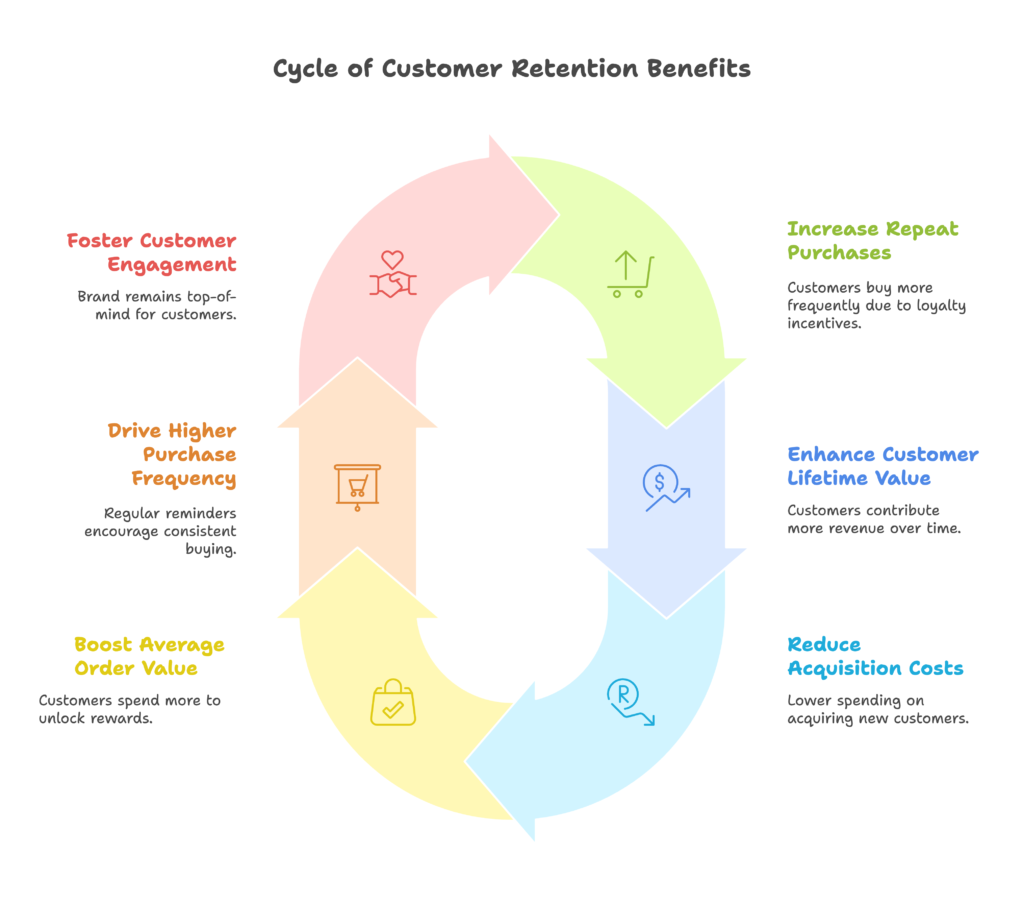
Customer retention delivers three core benefits that directly impact your profitability:
- Increased repeat purchase rates: Loyalty members buy 90% more frequently than non-members.
- Higher customer lifetime value: Members of loyalty programs have a 30% higher lifetime value than other customers.
- Reduced acquisition costs: You’ll spend less chasing new customers when existing ones keep coming back.
But retention is just the beginning. Loyalty programs also unlock significant revenue enhancement opportunities:
- Increased average order value: Customers often add more items to reach point thresholds or unlock rewards.
- Higher purchase frequency: Regular reminders about points balances and rewards drive more consistent buying patterns.
- Enhanced customer engagement: Your brand stays top-of-mind, leading to more consistent sales across seasons.
Shopify-Specific Loyalty Program Advantages
Shopify’s ecosystem offers distinct advantages for implementing loyalty programs that many store owners overlook. This isn’t just about slapping on a generic rewards system—it’s about leveraging Shopify’s unique architecture to create something seamless and powerful.
First, there’s the integration with your existing store infrastructure. Your loyalty program won’t exist in isolation; it will:
- Connect seamlessly with customer accounts: Points and rewards automatically sync with customer profiles.
- Work harmoniously with Shopify POS systems: Create a unified experience between online and in-store purchases.
- Synchronize data across all sales channels: Whether customers shop on mobile, desktop, or in-person, their loyalty status remains consistent.
Perhaps even more valuable are the enhanced customer insights you’ll gain. Your loyalty program becomes a window into customer behavior, providing:
- Deeper understanding of purchasing patterns: Identify what drives your best customers to buy.
- Improved segmentation capabilities: Group customers based on engagement level for targeted marketing.
- Better targeting for marketing campaigns: Use loyalty data to create highly personalized promotions.
With these foundational benefits in mind, let’s explore the building blocks of effective loyalty programs for Shopify stores.
Understanding Loyalty Program Fundamentals
Creating a successful loyalty program starts with understanding the different models available and the psychology that makes them effective. Get these fundamentals right, and you’ve already won half the battle in your shopify loyalty setup journey.
Types of Loyalty Programs for Shopify Stores
Each loyalty program type has distinct advantages depending on your business model, customer base, and operational capabilities.
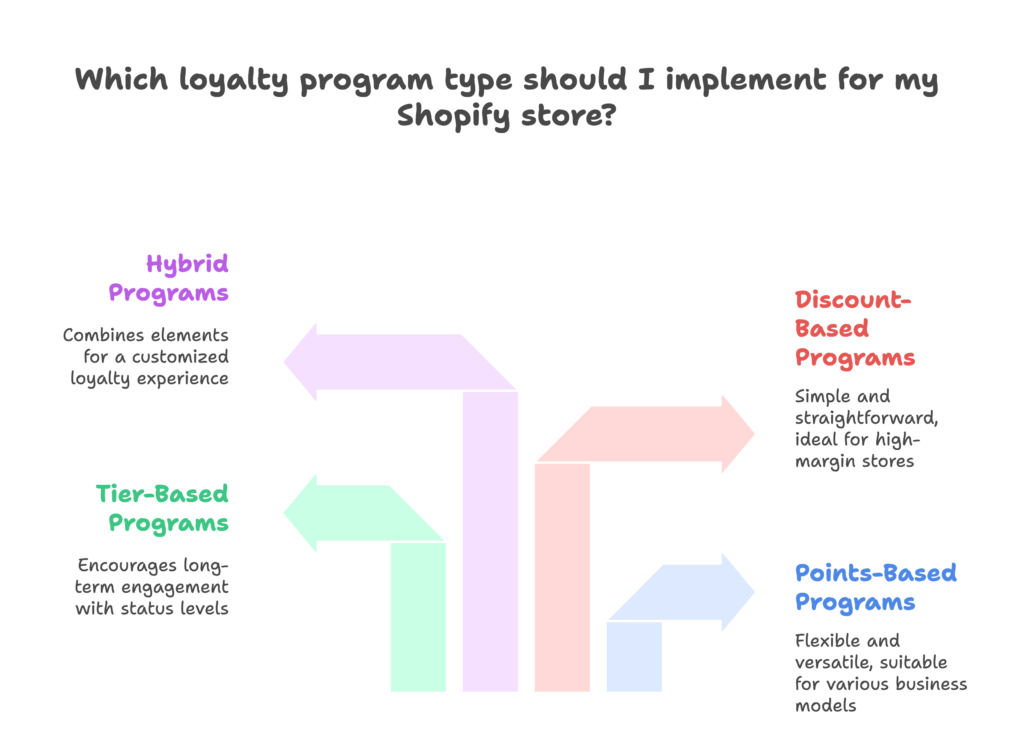
Here’s a breakdown of the four primary structures to consider for your first rewards program:
1. Points-Based Programs
The most common and versatile option, points-based programs create a virtual currency that customers earn and spend. This model is highly flexible and can be adapted to almost any Shopify business.
- Spend-to-earn point structures: Customers earn points based on purchase amount (e.g., 1 point per $1 spent). Simple to understand and implement, this approach directly rewards high-value purchases.
- Action-based point accumulation: Points awarded for actions beyond purchases, such as writing reviews, social media shares, or account creation. This encourages engagement across multiple touchpoints.
- Point redemption mechanisms: Options range from discount codes to free products or special experiences. The key is creating clear redemption thresholds that feel attainable but still encourage increased spending.
Frank Body, the Australian skincare brand, exemplifies this approach with their “Hotel Pink” loyalty program on Shopify, awarding points for purchases, social media engagement, and referrals.
2. Tier-Based Programs
Tier-based systems create status levels that customers climb by meeting specific criteria. This model excels at driving consistent, long-term engagement and works particularly well for premium Shopify stores.
- Status level requirements: Typically based on total spend, number of orders, or a combination of factors within a defined period.
- Escalating benefits structure: Each tier offers progressively better perks, creating a clear incentive to reach the next level.
- Exclusive perks for top-tier members: Reserved access to limited products, personal shopping assistance, or enhanced return policies create genuine value for your most loyal customers.
Sephora’s Beauty Insider program remains the gold standard here, with Insider, VIB, and Rouge tiers providing increasingly exclusive benefits based on annual spend.
3. Discount-Based Programs
Straightforward and easy to implement, discount-based programs offer various forms of price reductions as rewards. This approach works well for Shopify stores with higher margins or subscription-based models.
- Percentage-off rewards: Simple to communicate (e.g., “Earn 10% off your next purchase”).
- Fixed amount discounts: Dollar-value rewards that work especially well for higher-priced items.
- Free shipping thresholds: Particularly effective since shipping costs are a leading cause of cart abandonment.
The catch? Discount programs can train customers to wait for deals rather than pay full price, potentially eroding margins if not carefully structured.
4. Hybrid Programs
Many successful Shopify stores combine elements from multiple program types to create customized loyalty experiences. This flexibility allows you to cherry-pick the most effective elements for your specific business needs.
- Combining points and tier systems: Use points for immediate rewards while tiers create long-term status motivation.
- Integrating multiple reward types: Offer a mix of discounts, exclusive products, and experiential rewards to appeal to different customer motivations.
- Creating flexible redemption options: Let customers choose how they want to use their earned benefits.
Athleta’s tiered point system exemplifies this approach, combining points accumulation with status levels that unlock additional perks.
Psychological Principles Behind Effective Loyalty Programs
Understanding the psychology that drives customer loyalty can transform a mediocre program into a compelling one. Two core principles should inform your Shopify loyalty setup:
1. Reciprocity and Customer Appreciation
We’re naturally wired to return favors. When your brand gives something of value, customers feel a subtle obligation to reciprocate. This isn’t manipulation—it’s human nature.
- Creating perceived value: The perceived value of rewards often exceeds their actual cost. A $10 reward can generate significantly more than $10 in additional sales.
- Building emotional connections: Unexpected bonuses or personalized touches create emotional responses that transcend transactional relationships.
- Establishing brand loyalty: Consistent positive interactions build habitual purchasing patterns that are difficult for competitors to break.
This explains why the simple “surprise and delight” approach of sending unexpected reward points on customer birthdays typically generates return purchase rates of 35% or higher.
2. Exclusivity and Status Motivation
Humans are status-seeking creatures by nature. We value what’s scarce and exclusive, and we enjoy recognition for our actions and achievements.
- VIP experiences: Access to exclusive events, pre-sales, or limited products satisfies our desire to feel special.
- Members-only access: Creating “insiders” naturally generates curiosity from “outsiders.”
- Recognition mechanisms: Public acknowledgment of status (like visible tier badges) validates customer loyalty.
Now that we’ve covered the fundamentals, let’s move into the practical steps of planning your first rewards program.
Strategic Planning for Your Shopify Loyalty Program
Success doesn’t happen by accident. The most effective loyalty programs are built on careful planning and clear objectives. This preparatory phase might seem less exciting than launching your program, but it’s where the foundation for long-term success is established.
Defining Clear Program Objectives
Begin with the end in mind. What specific business outcomes do you want your loyalty program to achieve? Without clear objectives, you’ll struggle to measure success or make informed adjustments.
1. Identifying Primary Business Goals
Your loyalty program should directly support specific business objectives. Consider which of these goals is most crucial for your Shopify store right now:
- Customer retention targets: Are you primarily focused on reducing churn and increasing repeat purchase rates?
- Sales growth expectations: Do you need to increase average order value or purchase frequency?
- Engagement metrics: Is your goal to drive more product reviews, social shares, or website visits?
- Brand awareness goals: Are you looking to increase referrals and word-of-mouth marketing?
While your program might address multiple goals, prioritizing one or two primary objectives will keep your strategy focused and measurable.
2. Setting Measurable Success Metrics
Vague goals lead to vague results. Transform your objectives into specific, measurable KPIs that you can track over time:
- Program enrollment rates: What percentage of customers join your program? Aim for at least 30% participation among repeat customers.
- Point redemption frequency: Low redemption rates (under 20%) suggest your rewards aren’t compelling enough.
- Repeat purchase increases: Compare purchase frequency between members and non-members, targeting at least a 20% improvement.
- Customer lifetime value growth: Track incremental spending from program members over time, looking for at least 15-25% higher LTV.
Document these metrics before launch, and establish a regular cadence for reviewing them once your program is live.
Customer Research and Segmentation
Generic rewards rarely excite customers. To create a truly compelling program, you need to understand what motivates different segments of your audience.
1. Analyzing Existing Customer Data
Your Shopify store already contains a wealth of insights about customer behavior. Mine this data to inform your loyalty strategy:
- Purchase history patterns: Identify your most valuable customers and analyze what distinguishes their behavior.
- Product category preferences: Different customer segments likely gravitate toward different product types.
- Average order values: Understanding typical spend helps you set appropriate thresholds for rewards.
- Purchase frequency metrics: How often do your best customers return? This informs point expiration policies and tier timeframes.
Tools like Shopify Analytics, Google Analytics, and even simple customer surveys can help gather this information.
2. Developing Customer Personas
With data in hand, create detailed profiles of your different customer types. These personas will guide your program design:
- Demographic characteristics: Age, location, income level, and other relevant factors.
- Behavioral patterns: Shopping frequency, preferred products, average spend, and device preferences.
- Value-seeking motivations: What drives purchase decisions? Price sensitivity, quality focus, convenience, or status?
- Brand relationship factors: How do they currently engage with your brand? Social followers, email subscribers, or purely transactional relationships?
For many Shopify stores, three to five distinct personas emerge. Each might respond differently to various reward types, so this segmentation is crucial for program customization.
Resource Allocation Planning
Even the best loyalty strategy will fail without proper resource allocation. Be realistic about what your business can support.
1. Budget Considerations
A sustainable loyalty program requires careful financial planning:
- Program development costs: App fees, design work, and potential development resources.
- Ongoing operational expenses: Monthly software costs and management time.
- Reward fulfillment projections: Model different scenarios for reward redemption to ensure financial sustainability.
- Marketing and promotion allocations: Budget for launching and regularly promoting your program.
A common benchmark is allocating 2-3% of customer revenue toward loyalty rewards, though this varies by industry and margin structure.
2. Team Responsibilities
Clarify who will own different aspects of your loyalty program:
- Program management roles: Who will oversee the program strategy and performance?
- Customer service requirements: How will you handle loyalty-related questions and issues?
- Technical support needs: Who will manage app integration and troubleshoot technical problems?
- Marketing coordination: Who will create and distribute communications about the program?
For smaller Shopify stores, one person might handle multiple roles. The key is ensuring all responsibilities are clearly assigned.
With your strategic foundation in place, it’s time to design the program structure that will bring your loyalty vision to life.
Designing Your Shopify Loyalty Program Structure
The design phase transforms your strategic objectives into a tangible loyalty framework. This is where creativity meets strategy—you’ll create a program structure that’s both exciting for customers and aligned with your business goals.

Reward System Design
The heart of any loyalty program is its reward system. Get this right, and customers will eagerly participate; get it wrong, and even the best marketing won’t save your program.
1. Points Earning Mechanisms
Consider how customers will accumulate value in your program:
- Purchase-based point allocation: The standard approach is awarding points based on spend (e.g., 1 point per dollar). For higher-priced items, consider a multiplier to make earning feel more rewarding (10 points per dollar makes earning 500 points feel more achievable than earning 50).
- Social media engagement rewards: Award points for Instagram tags, Facebook shares, or Twitter mentions to extend your brand reach. Verify these actions through integration tools or custom hashtags.
- Account creation incentives: Offer points for creating an account, completing a profile, or subscribing to your newsletter—actions that enhance your marketing capabilities.
- Referral bonuses: Reward customers who bring new shoppers to your store. This often generates your highest-value new customers.
Successful programs typically include a mix of transactional and engagement-based earning opportunities. Just ensure the point values align with the relative value each action brings to your business.
2. Redemption Options
The reward redemption experience is where customer excitement peaks—or disappoints. Consider these options:
- Discount vouchers: The simplest approach, offering percentage or fixed-amount discounts on future purchases. These work well but can train customers to wait for discounts.
- Free products or samples: Particularly effective for consumable products or when introducing new items to your catalog.
- Exclusive merchandise: Loyalty-only products create strong redemption motivation and don’t trigger the discount expectation cycle.
- Early access to sales or new products: This costs nothing to provide but creates significant perceived value for engaged customers.
The most sustainable programs offer a mix of redemption options with varying point requirements. This creates both quick wins (small discounts) and aspirational goals (exclusive high-value rewards).
Program Rules and Policies
Clear, fair rules provide the structure that makes your loyalty program both profitable and sustainable over time.
1. Point Expiration Policies
Expiration policies balance customer-friendliness with program economics:
- Time-based expiration terms: Points that expire after 12-24 months encourage regular engagement without seeming unfairly short.
- Activity requirements: Some programs keep points valid as long as there’s account activity every 6-12 months, encouraging consistent engagement.
- Communication protocols: Whatever policy you choose, communicate expiration dates clearly and send reminder emails before points expire to maintain goodwill.
From both customer experience and legal perspectives, your expiration policy must be transparent and prominently disclosed during enrollment.
2. Tier Advancement Criteria
If your program includes status tiers, carefully design the advancement structure:
- Spending thresholds: Set tier qualification based on total annual spend, with thresholds that motivate higher spending without feeling unreachable.
- Purchase frequency requirements: Some programs prioritize regular buying over total spend, rewarding customers who make smaller but more frequent purchases.
- Tier maintenance rules: Clarify how long status lasts and what’s required to maintain it. Annual requalification is standard, but consider a grace period or partial status extension for nearly-qualifying customers.
The gap between tiers should be significant enough to feel exclusive but achievable enough to motivate advancement. Industry benchmarks suggest roughly 15-25% of members should reach your middle tier, while 5-10% reach the highest tier.
3. Terms and Conditions Development
Proper terms protect both your business and your customers:
- Legal compliance considerations: Ensure your program complies with relevant laws regarding loyalty programs, which vary by region.
- Clear benefit explanations: Spell out exactly what members receive at each level, avoiding vague promises.
- Dispute resolution procedures: Establish processes for addressing point discrepancies or redemption issues.
Have your terms reviewed by a legal professional familiar with loyalty programs to avoid potential compliance issues.
Program Branding and Messaging
Your loyalty program should feel like a natural extension of your brand, not a generic add-on.
1. Creating a Compelling Program Name
The right name sets the tone for your entire program:
- Alignment with store branding: Your program name should reflect your overall brand voice and positioning.
- Memorability factors: Choose something distinctive that’s easy to remember and reference.
- Value proposition communication: Consider names that hint at the program’s core benefit (e.g., “Perks Club” or “VIP Rewards”).
Successful examples include Sephora’s “Beauty Insider” (emphasizing exclusive knowledge), DSW’s “VIP Rewards” (highlighting status), and Starbucks’ straightforward “Rewards” program.
2. Developing Program Visuals
Visual identity helps your program feel cohesive and professional:
- Logo and icon design: Create a distinctive mark that works across digital and physical touchpoints.
- Color scheme selection: Consider using your primary brand colors with a distinguishing accent color for loyalty elements.
- Visual hierarchy for program elements: Design a consistent system for displaying points, tiers, and rewards throughout the customer journey.
With your program structure designed, it’s time to tackle the technical implementation on your Shopify store.
Technical Implementation on Shopify
Now comes the exciting part—bringing your loyalty program to life on your Shopify store. The platform’s app ecosystem makes this process more straightforward than you might expect, even if you’re not technically inclined.
Selecting the Right Loyalty App
Your choice of loyalty app will significantly impact both functionality and customer experience, so this decision deserves careful consideration.
1. Shopify App Store Options
The Shopify App Store offers several strong contenders for your first rewards program:
- Joy Loyalty Program features: Excels in user-friendly setup and visual customization, with strong points-based program capabilities and referral features.
- Wholesale Helper capabilities: While primarily designed for B2B, its loyalty modules offer excellent tier-based programs with robust automations.
- Other popular solutions: Smile.io, LoyaltyLion, and Yotpo Loyalty each offer distinctive approaches with varying price points and feature sets.
Take advantage of free trials to test different apps before committing. Most providers offer guided demos that can help you envision how their solution would work with your specific store.
2. Evaluation Criteria
Assess potential loyalty apps based on these key factors:
- POS integration capabilities: Essential if you operate physical stores alongside your Shopify site.
- Customization options: Can the app be tailored to match your branding and program structure?
- Pricing structures: Look beyond the monthly fee to understand transaction fees or charges based on member count.
- Customer support quality: Check response times and support channels, particularly if you’re less technically confident.
- User reviews and ratings: Pay special attention to reviews from stores similar to yours in size and industry.
Consider your growth trajectory as well. An app that works for your current size might become limiting or prohibitively expensive as you scale.
Installation and Configuration
Once you’ve selected your app, the implementation process typically follows these steps:
1. App Installation Process
Adding your chosen loyalty app to Shopify is straightforward:
- Accessing the Shopify App Store: Log into your Shopify admin, navigate to the App Store, and search for your chosen loyalty app.
- Adding the selected loyalty app: Click “Add app” and follow the installation prompts.
- Authorizing app permissions: Review and approve the access requests—loyalty apps typically need permissions to customer data, order information, and store customization.
Most apps will guide you through an initial setup wizard immediately after installation.
2. Basic Setup Steps
Configure the fundamental aspects of your program:
- Program rules configuration: Set up your points system, earning rules, and tier structures based on your design planning.
- Point values establishment: Define how customers earn points (e.g., spend amount, specific actions) and their monetary value for redemption.
- Reward options setup: Configure available redemption options, point requirements, and any restrictions.
- Customer display settings: Customize how the program appears to customers, including widget placement, pop-ups, and account dashboard elements.
Take time to test the customer experience thoroughly before launch. Create a test account and move through the entire journey from sign-up to reward redemption.
Integration with Shopify POS
For merchants with physical stores, extending your loyalty program to in-person transactions creates a seamless omnichannel experience.
1. POS Extension Setup
Configure your loyalty program for in-store use:
- Adding the loyalty app tile: Most loyalty apps offer a POS interface that can be added to your Shopify POS home screen.
- Selecting appropriate version: Ensure compatibility between your POS hardware, Shopify POS plan, and loyalty app.
- Configuring POS display options: Customize what information is visible to staff during checkout (points earned, customer tier, available rewards).
Test the POS integration thoroughly before rolling it out to all store locations. This often uncovers workflow issues that aren’t apparent in theoretical planning.
2. Staff Training for In-Store Implementation
Your team needs clear guidance on managing loyalty interactions:
- Point addition procedures: Train staff on how to ensure customers receive points for in-store purchases, including lookups for customers who forget their information.
- Reward redemption processes: Create clear protocols for validating and applying rewards at the point of sale.
- Customer enrollment workflows: Develop scripts and processes for inviting customers to join your program during checkout.
- Troubleshooting common issues: Prepare staff to handle situations like missing points, technical glitches, or customer confusion about program rules.
Create a quick reference guide that staff can access easily during customer interactions.
With your technical implementation complete, it’s time to focus on successfully launching and promoting your new loyalty program.
Launching and Promoting Your Loyalty Program
Even the most brilliantly designed loyalty program will fail without proper promotion. Your launch strategy should create excitement and drive immediate enrollment, while ongoing promotion keeps the program visible and engaging.
Pre-Launch Preparation
A successful launch requires thorough preparation to ensure everything runs smoothly from day one.
1. Testing Program Functionality
Comprehensive testing prevents embarrassing issues during your public launch:
- Point earning verification: Confirm points are correctly awarded for all qualifying actions and purchases.
- Redemption process testing: Test each reward type from selection through to application or fulfillment.
- Customer interface evaluation: Check the program’s appearance and functionality across devices (mobile, tablet, desktop).
- POS integration confirmation: If applicable, verify that in-store and online points sync properly and redemptions work at both touchpoints.
Consider conducting a small beta test with a select group of loyal customers. Their feedback can identify issues and help refine the program before full launch.
2. Staff Training
Your team needs to be fully prepared to support the loyalty program:
- Program mechanics education: Ensure all team members understand how points are earned, how tiers work, and what rewards are available.
- Customer communication guidelines: Develop clear talking points for explaining program benefits and addressing common questions.
- Troubleshooting procedures: Establish protocols for handling issues like missing points or redemption problems.
- FAQ development: Create a comprehensive FAQ document that staff can reference when needed.
Consider creating role-specific training materials. Customer service needs different information than marketing team members or store associates.
Launch Marketing Strategy
Your launch communications should generate excitement and drive immediate program adoption.
1. Existing Customer Communication
Your current customers should be the first to hear about your new program:
- Email announcement campaigns: Create a series of emails introducing the program, highlighting key benefits, and providing clear signup instructions.
- In-store signage and materials: For physical locations, develop prominent displays, counter cards, and bag stuffers announcing the program.
- Website banners and popups: Use eye-catching elements to promote the program throughout your site, especially on high-traffic pages.
- Order confirmation notifications: Add program information to post-purchase communications when customer attention is high.
Consider giving existing customers a head start with bonus points or automatic tier placement based on their previous purchase history. This creates immediate value and encourages engagement.
2. New Customer Acquisition Tactics
Your loyalty program can also attract new shoppers to your brand:
- Social media promotion: Create dedicated posts explaining program benefits, potentially using video for more comprehensive explanations.
- Paid advertising campaigns: Consider targeted ads highlighting loyalty benefits as part of your value proposition.
- Influencer partnerships: Engage relevant influencers to showcase how the program enhances the customer experience.
- Sign-up incentives: Offer bonus points or immediate rewards for new customers who join both your store and loyalty program.
Emphasize the enrollment process in all acquisition materials. The easier it is to join, the higher your conversion rate will be.
Ongoing Promotion Tactics
Launching your program is just the beginning. Ongoing promotion maintains awareness and drives continued engagement.
1. Regular Program Reminders
Keep your loyalty program top-of-mind with consistent communications:
- Points balance notifications: Regular updates on points earned and available rewards maintain engagement.
- Redemption opportunity alerts: When customers near point thresholds, remind them about available rewards.
- Tier advancement reminders: Alert customers who are close to reaching the next status level.
- Special promotion announcements: Highlight limited-time offers like double points events or exclusive member sales.
Segment these communications based on member activity level. Engaged members might receive more frequent updates, while at-risk members need more compelling re-engagement offers.
2. Seasonal and Special Campaigns
Strategic promotions throughout the year revitalize program interest:
- Holiday bonus point events: Offer enhanced earning opportunities during key shopping periods.
- Birthday rewards: Personalized offers on customer birthdays create goodwill and drive incremental purchases.
- Limited-time point multipliers: Temporarily increase point earning rates for specific products or categories to drive sales in those areas.
- Exclusive member sales: Create special shopping events available only to program members.
These special promotions should be planned well in advance as part of your annual marketing calendar.
With your program successfully launched and promoted, you’ll need to measure its performance and make continuous improvements.
Measuring Success and Optimizing Performance
The launch of your loyalty program is just the beginning of its journey. Ongoing measurement and optimization are essential for maximizing return on investment and ensuring your program evolves with your business and customer needs.
Key Performance Indicators
Effective measurement starts with tracking the right metrics. These indicators will tell you whether your program is delivering the intended business impact.
1. Enrollment and Engagement Metrics
These metrics reveal how customers interact with your program:
- Program participation rate: The percentage of customers who join your program (aim for 40-60% of repeat customers).
- Active member percentage: Members who have earned or redeemed points in the last 90 days (target at least 25-30%).
- Point earning frequency: How often members accumulate points, indicating program engagement.
- Redemption conversion rate: Percentage of earned points that are actually redeemed (healthy programs see 60-70%).
Low engagement metrics often signal that your program structure needs adjustment. If customers aren’t redeeming points, for example, your rewards may not be compelling enough or point thresholds may be too high.
2. Financial Impact Measurements
These metrics demonstrate the business value your program delivers:
- Program ROI calculation: Compare program costs (technology, rewards, marketing) against incremental revenue from members.
- Average order value changes: Compare AOV between members and non-members, and before/after implementation.
- Purchase frequency increases: Measure how often members shop compared to non-members or pre-program behavior.
- Customer lifetime value growth: Calculate the total value of members over time compared to non-members.
Effective loyalty programs typically deliver 15-25% higher purchase frequency and 5-10% higher average order values among members. If your results fall significantly below these benchmarks, deeper program optimization may be necessary.
Data Analysis and Optimization
Regular analysis helps you refine your program based on actual performance data rather than assumptions.
1. Regular Performance Reviews
Establish a consistent review cadence to track program health:
- Monthly metric evaluations: Review core KPIs monthly to identify immediate issues or opportunities.
- Quarterly trend analysis: Look for patterns and seasonal factors that influence program performance.
- Annual program assessment: Conduct a comprehensive review to evaluate overall impact and plan significant updates.
Document these reviews and maintain historical data to identify long-term trends. What appears as normal seasonal variation in monthly reviews might reveal more significant patterns when viewed annually.
2. A/B Testing Strategies
Controlled testing helps you optimize program elements without guesswork:
- Reward structure variations: Test different point values or redemption thresholds to find the sweet spot.
- Point earning adjustments: Experiment with different earning rates or bonus point opportunities.
- Communication approach testing: Compare different messaging strategies, email frequencies, or promotional tactics.
- Redemption option comparisons: Test customer preference between discount types, free products, or experiential rewards.
Shopify’s native analytics combined with your loyalty app’s reporting tools make these tests relatively easy to implement and measure. Just ensure you’re testing one variable at a time for meaningful results.
Program Evolution Planning
As your business grows and the competitive landscape changes, your loyalty program must evolve accordingly.
1. Scaling Your Program
As your program matures, consider these expansion opportunities:
- Adding new reward tiers: Create aspirational levels for your most valuable customers.
- Expanding earning opportunities: Introduce new ways to earn points beyond purchases.
- Introducing premium membership levels: Consider paid membership tiers with enhanced benefits for your most engaged customers.
Successful programs typically undergo significant refreshes every 18-24 months to maintain customer interest and competitive positioning.
2. Addressing Common Challenges
Be prepared to tackle these frequent loyalty program issues:
- Low engagement solutions: If participation lags, simplify program structures, enhance reward value, or improve communication frequency.
- Redemption rate improvements: Add lower-threshold rewards to encourage initial redemption, which often leads to increased program engagement.
- Point inflation management: Monitor the ratio of points issued versus redeemed to avoid liability growth; adjust point values or introduce attractive redemption options if necessary.
- Program fatigue prevention: Refresh program elements, introduce limited-time promotions, or create surprise bonus opportunities to maintain excitement.
Customer feedback is invaluable for addressing these challenges. Regular surveys and analysis of support inquiries can reveal pain points that might not be apparent in quantitative data alone.
References:
- Wholesale Helper. (2025, February 20). Shopify Loyalty Programs – A Complete guide[2025]. https://wholesalehelper.io/blog/shopify-loyalty-programs/
- Loyalty Reward Co. (2025, March 6). Shopify Loyalty Programs: The Definitive Guide For eCommerce. https://loyaltyrewardco.com/shopify-loyalty-programs-definitive-guide-ecommerce/
- Joy.so. (2025, March 17). An Expert Guide to Shopify POS Loyalty Programs. https://joy.so/shopify-pos-loyalty-programs/
- eCorn Agency. (2024, December 21). Shopify Loyalty Programs: A Strategic Guide to Customer Retention. https://www.ecorn.agency/blog/shopify-loyalty-programs-strategic-guide-customer-retention
- Shopify. (2025). Loyalty Program Documentation. Shopify Help Center.
Ready to supercharge your Shopify store’s sales with perfectly optimized discount codes and loyalty campaigns? Growth Suite is a Shopify app that helps you run effective on-site discount campaigns and email collection programs. With personalized, time-limited offers based on customer behavior, Growth Suite protects your branding while driving conversions and revenue. Install it with a single click and start seeing results today!
Also don’t forget to check these articles;
